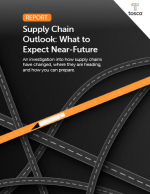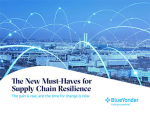AlixPartners 2023 Disruption Index A Bias for Action Sets Growth Leaders Apart
In their 4th annual AlixPartners Disruption Index, business leaders cite this as the central dilemma, with 85% of CEOs telling us that it has become increasingly difficult to know what to prioritize.
Letter from Simon Freakley, AlixPartners, CEO
The world keeps getting more complex. We all feel this every day. Myriad disruptions arise, feed off one another, cascade around the world at an accelerated pace, upend our operations, and knock strategies off course.
The leadership challenge is unprecedented: Amid so many formidable issues but daunting long-term disruptions and difficult short-term demands - how should we focus our all-too-finite resources of capital and time?
In our 4th annual AlixPartners Disruption Index, business leaders cite this as the central dilemma, with 85% of CEOs telling us that it has become increasingly difficult to know what to prioritize.
The AlixPartners Disruption Index (ADI) measures the state of disruption across major industries and regions.
For more than 40 years, AlixPartners has been helping our clients navigate disruption. In an environment of relentless change, the lessons we have learned from our roots in turnaround and restructuring are as relevant for healthy companies as they are for troubled ones. One of the most critical lessons we have learned is that you cannot combat disruption if you are overwhelmed with distractions. You must cut through the noise to find and focus on what really matters. You must be willing to take bold actions to move your company where it needs to go. And to do so at speed.
Our survey identified a segment of companies we call growth leaders - enterprises that are outpacing their competitors. If one thing sets them apart, it is bold action. More than half are changing their business models this year. Across the board, we see them performing better, yet still trying to do more, whether that’s fixing their supply chain or attracting the best talent, or transforming their business with technology.
And despite all the challenges, including any potential unknowns, growth leaders are optimistic about the future. New technologies promise to solve some of our most existential threats, including those arising from climate change and aging populations. Growing geopolitical competition and conflict could actually demonstrate the need for greater international cooperation. Disruption may be the new economic driver, but it creates opportunities, not just threats.
Leaders must be prepared to meet the challenge of this disruptive age. I hope this report provides some insight into how to do just that.
What’s Related




Favorites





